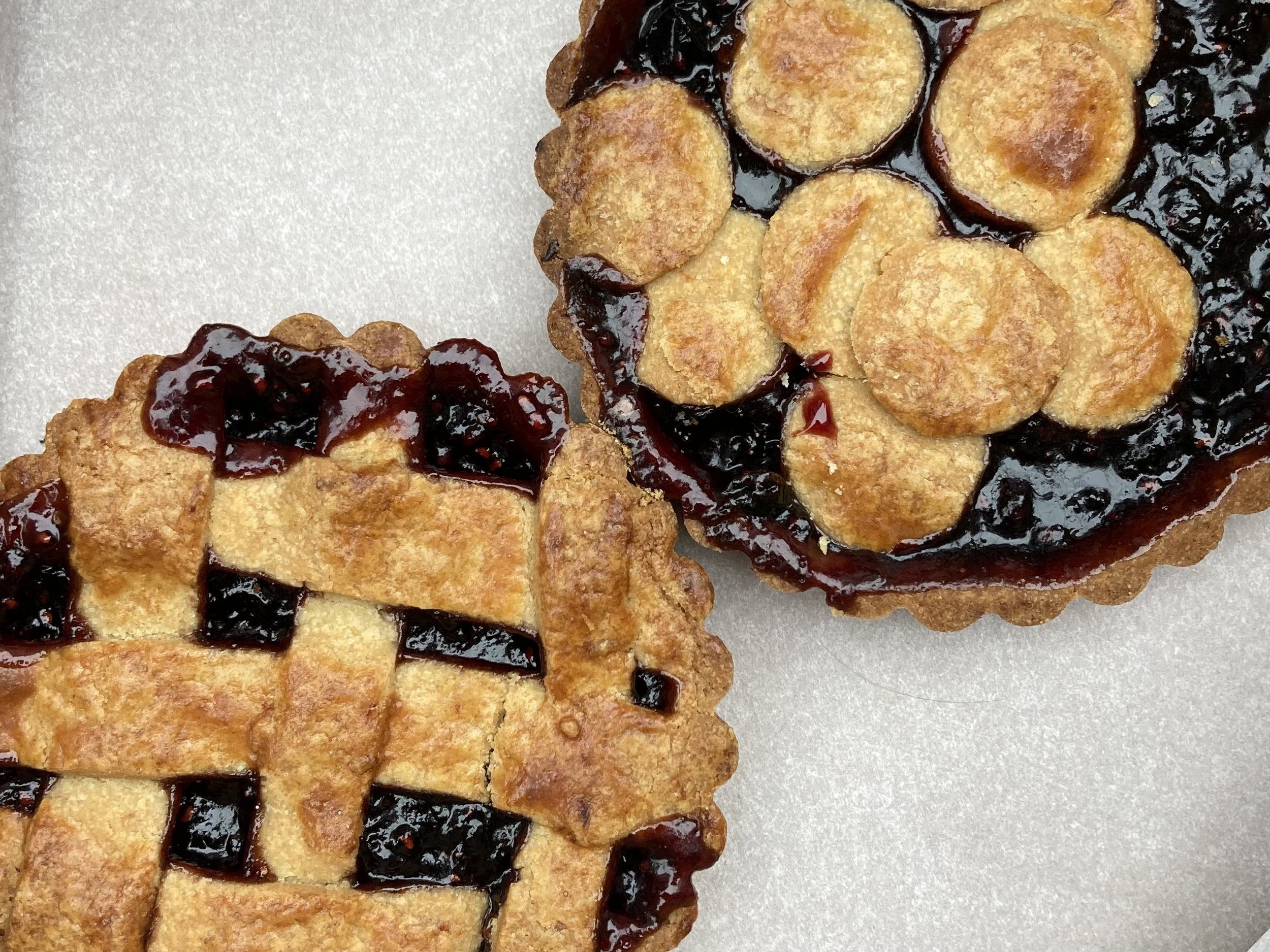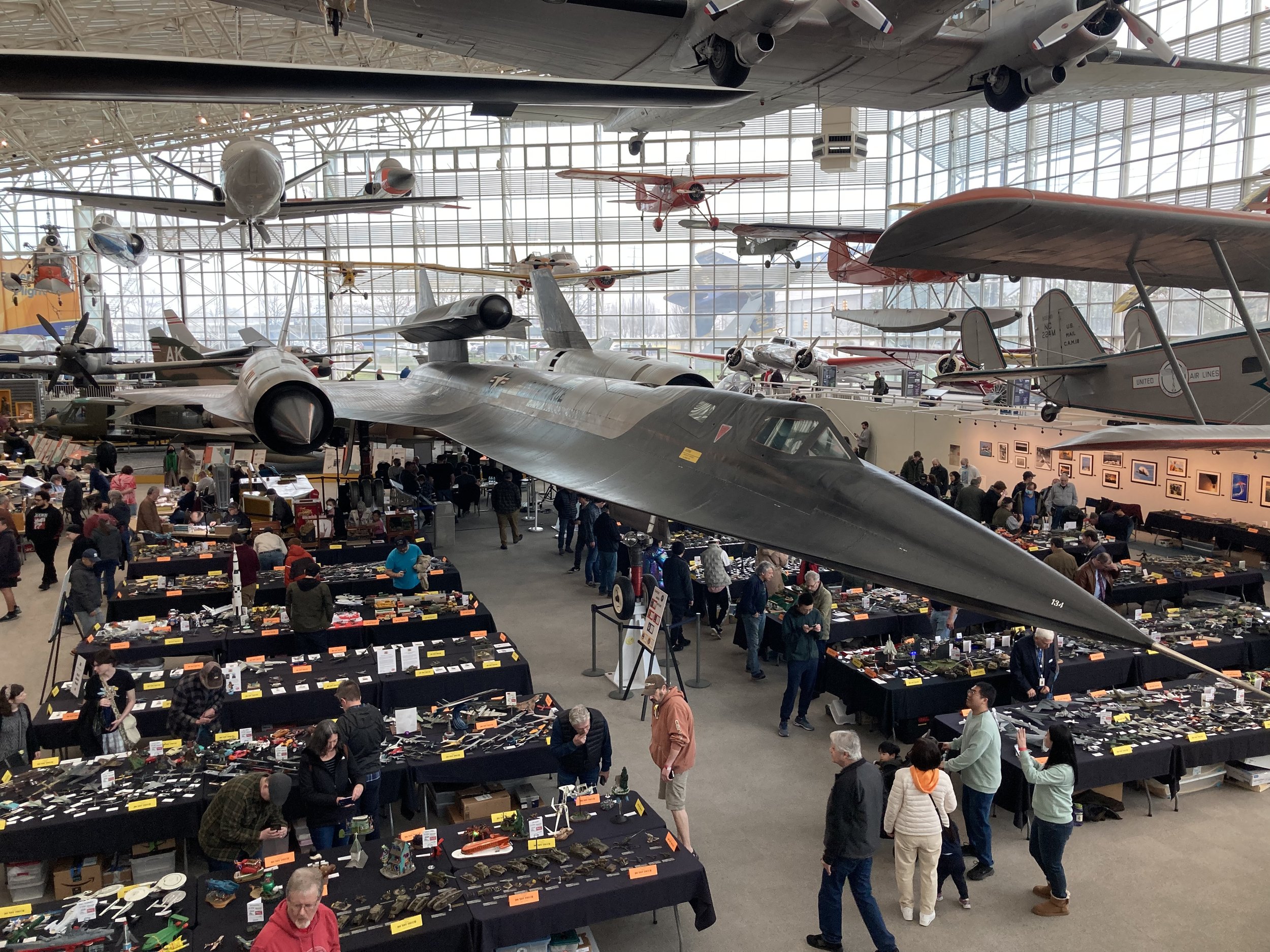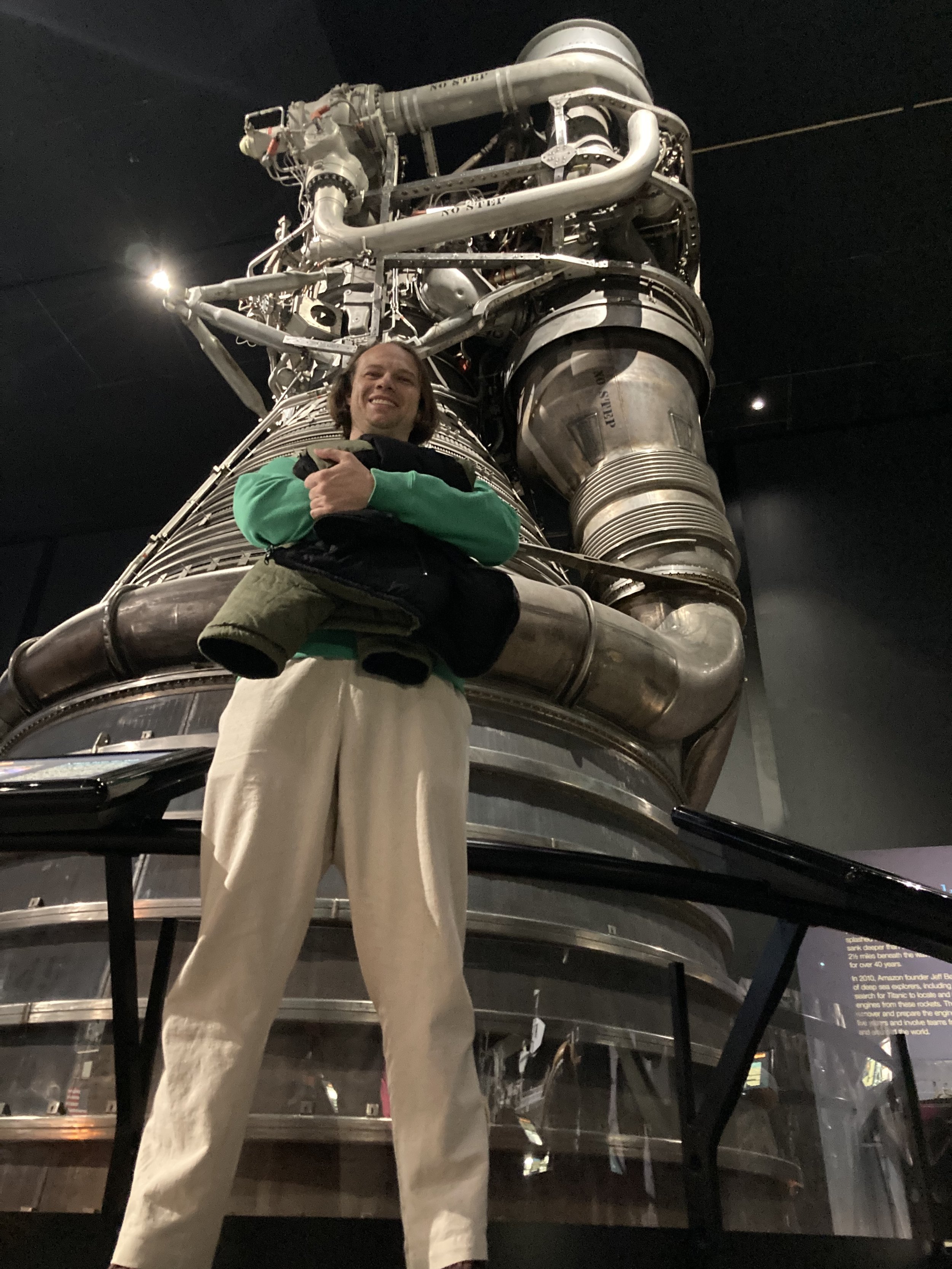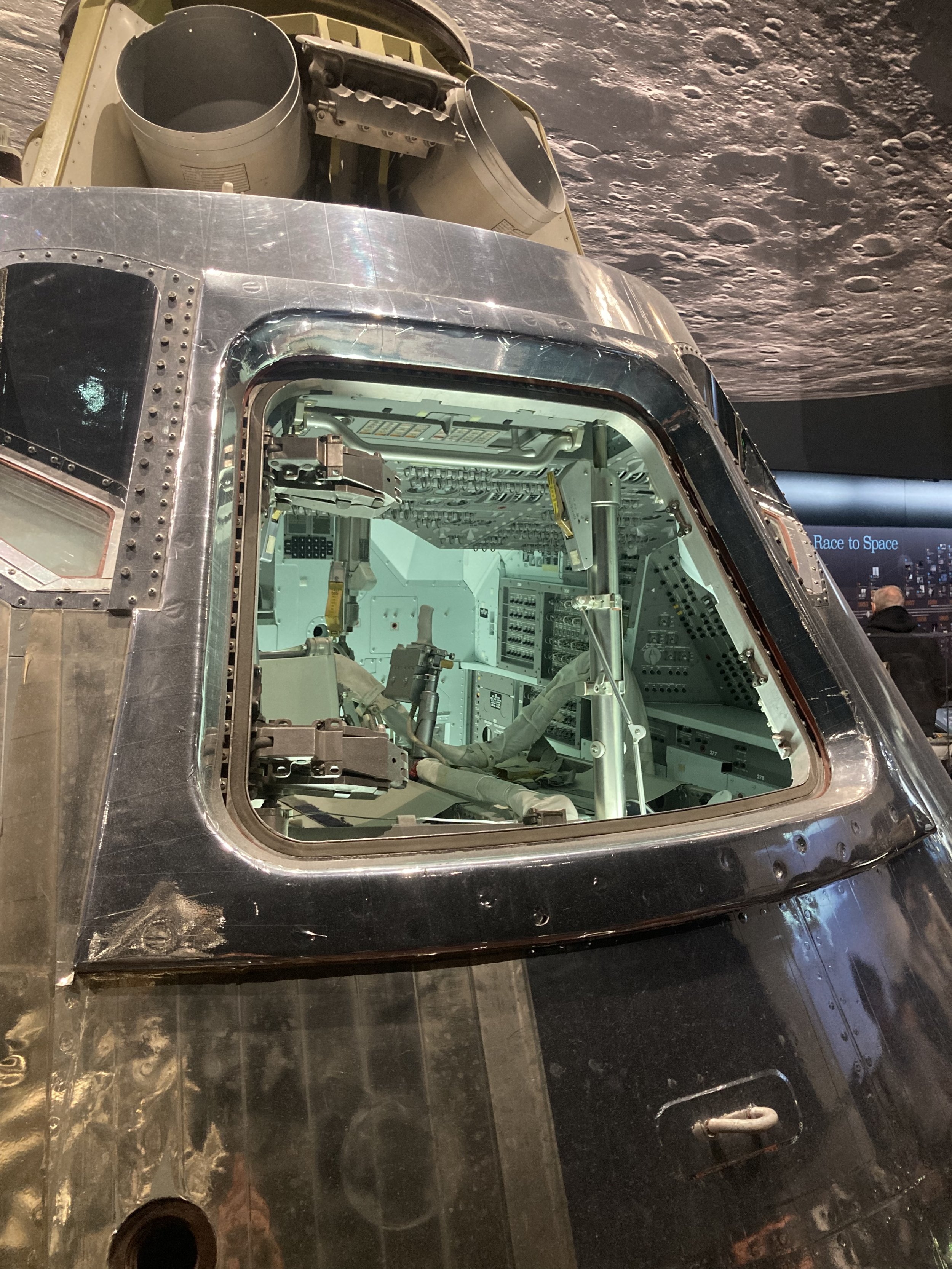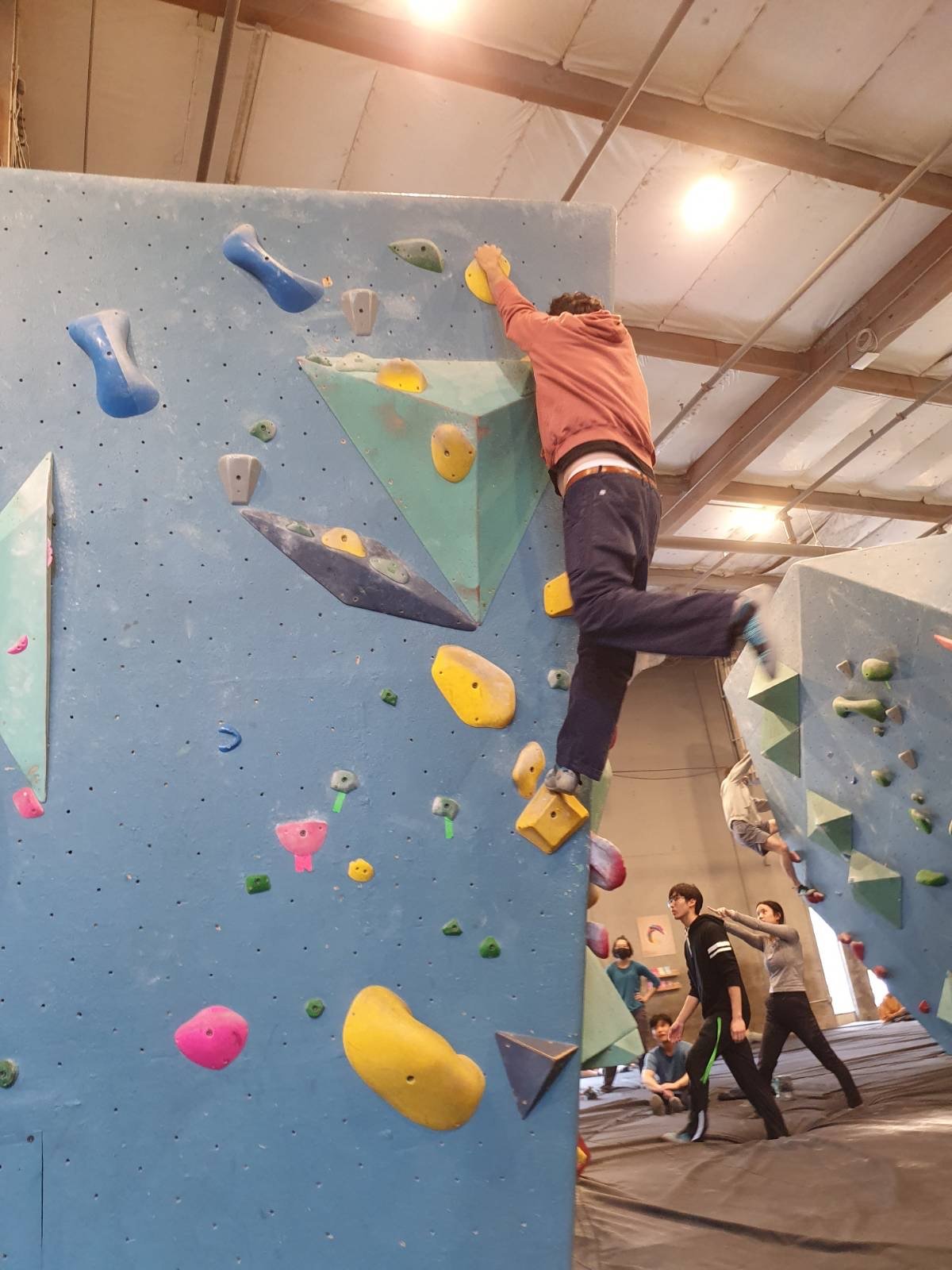Day 5: Seattle, pt.2
Welcome
Yesterday we played a second show in Seattle and visited the Museum of Flight.
It was a bad day to be a Jammy Joy. Local baker Sophie Handler of Sophie Bay Biscuits had delivered us a generous care package the previous evening and while most of it was rapidly demolished I saved these two delightful creations for breakfast. They are jam-filled pastries, made with orange shortcrust and filled with homemade four-berry jam. For services to breakfast I am proud to award Sophie Handler 1000 boints.
Jammy Joys
Sugar levels were now sufficiently stable and we were ready for our first appointment of the day, a visit from Will. This time last year Will was doing front of house for our North American tour and sharing a very similar bus to the one we are now riding.
We had been looking forward to this visit, not just because he is a great friend of ours but because he was bringing his newest family member, a nine-month-old puppy named Bones. He has big paws, long floopy ears, and wears a Carhartt jacket.
Appointment two involved getting into an uber and heading south on i5 for about fifteen minutes until you reach King Country International Airport, and the small group of hangars at the south end of the runway that house the Museum of Flight. Jon, Tristan, and I had come down here because of our love of all things engineering - especially aerospace engineering. The museum had a fantastic collection of military and civilian aircraft that we got to look at and in some cases interact with.
We started in the Great Gallery in which many of these aircraft are carefully displayed. The centerpiece is the ‘Blackbird’, the giant titanium reconnaissance jet that flew at over mach 3 at 85,000ft to avoid air defenses. This particular example is a variant called the M21 that was used (unsuccessfully) to launch an even higher speed reconnaissance drone. There is also a Blackbird cockpit that you can climb inside, salvaged from an aircraft that crashed in 1968. Most of the switches, gauges, and instruments are still intact and it’s a very cool experience climbing inside a time capsule of 1960s technology. It was actually much more spacious than I expected, but you wouldn’t want to be too tall.
The Blackbird.
There was a model-making exhibition that was taking place on the floor of the great gallery and we happened upon an unexpected gem nestled in between rows and rows of model tanks and planes. This mini work bench has a set of fully-functional hand tools including chisels, files, planes, spokeshaves, and marking gauges. And even a tiny angle-poise lamp!
The Apollo exhibition was pretty amazing. There is an unused F1 Rocket, the type used to power the first stage of the Saturn V Moon rocket. Five of these things are arrayed in a quincunx ⚄ formation and would lift the 3000 tonne rocket up to a height of 67km before the second stage took over. A thing I didn’t know about these rockets is that the four outer engines can be hydraulically turned with gimbals to steer the rocket.
The F1.
There is also an intact Apollo Command Module. This one was used by NASA for testing and training and never went into space. It was cool getting to see features like the interface for the Apollo Guidance Computer, and the sextant that was used to realign the gyroscopes in the craft’s navigation system.
There is a really good recreation of the Apollo Lunar Module. None of the original LMs returned to earth and only a few spare parts remain. It was a lot larger than expected and this one didn’t even have the descent stage with the trademark spidery legs. No wonder the Saturn V needed to be so big to get this payload out of the atmosphere.
The exhibition also has an engineering mock-up of the Lunar Roving Vehicle that was built by Boeing early in the programme.
Jon also piloted the moon landing simulator on the highest difficulty, and touched down safely on his first try.
While we were deeply engrossed in the contents of this palace of technical marvels, Liz took Jake for his first ever bouldering. Judging by the pictures Liz sent through he seemed to be doing a great job of getting up those walls.
Night two in Seattle was a lot smoother than the first. Not completely smooth - we still had a problem inflating Bird - but the set felt relaxed and precise.
It was a class 2 load-out. Very straightforward but with a fun modifier: everywhere outside the venue was party. It was Saturday night and there were crowds spilling out of all the clubs and flocking to the three taco stands that dominated the intersection. There was music booming from one of the stands, and a dance floor, and someone trying to use a microphone while feedback screeched from the speaker. Out and through this cacophony and unruliness we went, wheeling our gear to a waiting Gabe who again did a beautiful job of the flat-pack.
